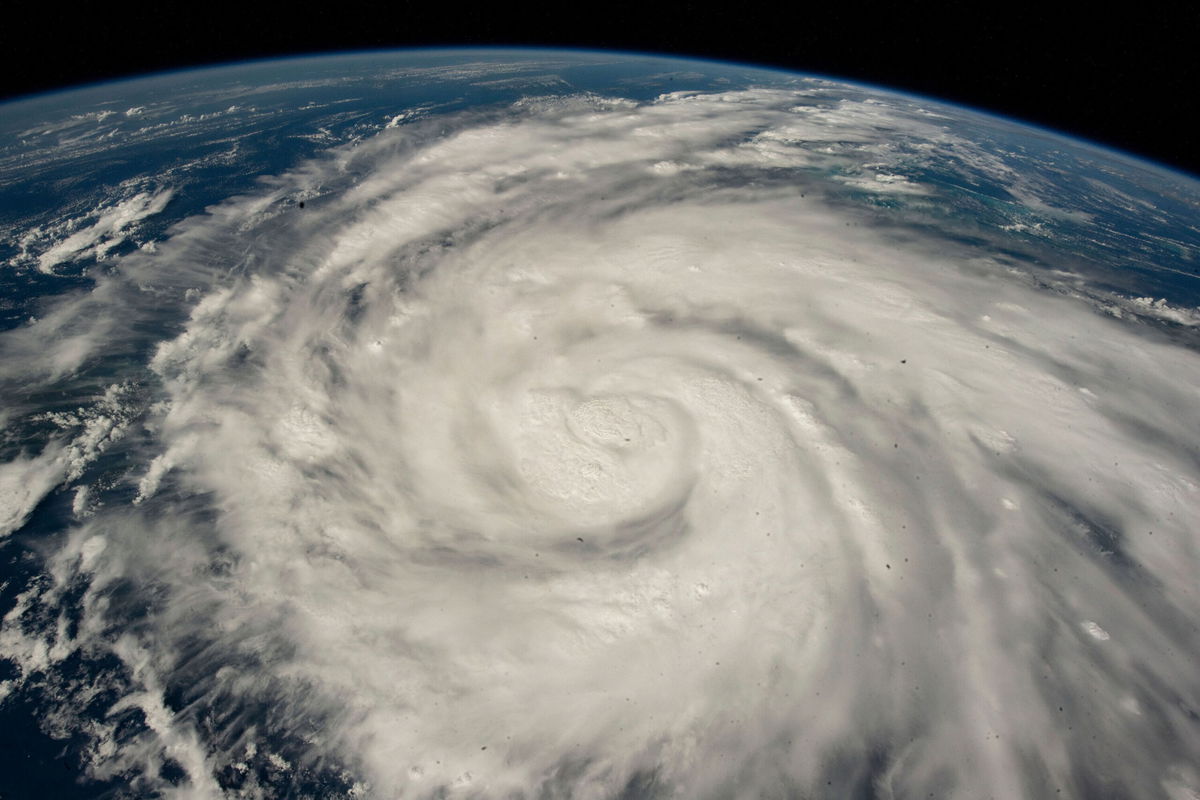The ways Hurricane Ian is an unprecedented storm for Florida’s Gulf Coast

Hurricane Ian is bearing down on the Gulf Coast of Florida as one of the strongest storms on record for the area. The view of Hurricane Ian from the International Space Station (ISS) on September 26 is pictured here.
By Angela Fritz and Brandon Miller, CNN
Hurricane Ian is bearing down on the Gulf Coast of Florida as one of the strongest storms on record for the area. Its storm surge could be unlike anything seen there, and forecasters are warning that Ian’s intense rainfall — which is expected to continue across the peninsula through Thursday, could lead to life-threatening floods.
Here are the ways Hurricane Ian is unprecedented.
Strongest storm in the region on record
Despite being squarely in hurricane territory, major hurricanes — Category 3 or stronger — are uncommon for this part of Florida.
When Hurricane Ian made landfall Wednesday with maximum winds of 150 mph, it tied 2004’s Hurricane Charley as the strongest storm to make landfall on the west coast of the Florida peninsula.
Storm surge forecast: Up to 18 feet
The National Hurricane Center on Wednesday increased Ian’s storm surge forecast to 12 to 18 feet from Englewood to Bonita Beach, which would be something never seen in the region.
The storm’s surge has already set records for highest water levels ever observed in multiple locations, including Ft. Myers and Naples in southwest Florida. Water levels at Ft. Myers continued to rise after Hurricane Ian’s landfall. In Naples, water levels were 2 feet above record level at 1 p.m., though the gauge stopped reporting data so it is unclear how high the water climbed there.
Storm surge is generated mainly by the hurricane’s strong winds, which blow from the ocean toward land and push huge amounts of water beyond the coast. And the surge could be Ian’s most deadly aspect — 90% of hurricane-related deaths are water-related, according to the National Hurricane Center, and around 50% are caused by storm surge.
Hurricane Charley, which made landfall in the same area as a Category 4 in 2004, had a maximum storm surge of around 6 or 7 feet, making Ian’s forecast more than twice as high.
Part of what will make Ian’s storm surge so much larger is its size. The hurricane’s eyewall — where the strongest winds are located — covers a much larger area than Charley in 2004, and its hurricane-force winds spread 80 miles across the storm, which will spread storm surge across a much larger area.
Unprecedented strengthening
Hurricane Ian rapidly intensified Wednesday morning. Its maximum winds increased from 120 mph to 155 mph in less than three hours, jumping from a Category 3 to a strong Category 4 in the process.
Rapid intensification is defined as a wind speed increase of 35 mph or more in 24 hours, and it has historically been a rare phenomenon. But scientists say it is becoming more likely for hurricanes as the climate crisis advances, pushing ocean temperatures higher and laying the groundwork for them to explode at a breakneck pace into deadly major hurricanes.
Ian’s rapid intensification was unprecedented for a storm this strong in its location Wednesday morning, according to Sam Lillo, a forecast team engineer at DTN Weather. Not only did Ian’s intensity jump significantly, but Lillo also said there is no record of a storm that strong strengthening at all in that location.
Extreme flood threat over several days
Extreme rainfall is a huge concern with Hurricane Ian. Rather than zipping quickly across the Florida peninsula after landfall, Ian is going to take its time getting to the Atlantic, which means it will have more time to generate flooding rain.
“Widespread, life-threatening, catastrophic flooding is expected across portions of central Florida with considerable flooding in southern Florida, northern Florida, southeastern Georgia and coastal South Carolina,” the National Hurricane Center said Wednesday. “Widespread, prolonged major and record river flooding expected across central Florida.”
The Weather Prediction Center has issued its highest outlook, level 4 of 4, for extreme rainfall across a wide band of the Florida peninsula, including the Tampa area, Cape Coral, Orlando and Melbourne.
Rainfall rates will likely exceed 3 inches per hour on Wednesday, which could result in at least a foot of rain across central Florida, the center said. Rainfall will shift north on Thursday, putting Gainesville and Jacksonville at risk.
Record river flooding in the forecast
What makes Ian’s flood threat even more intense is that rivers in Florida were already swollen before the hurricane arrived. More than twice the average amount of rain has fallen over southern Florida in the past two weeks, with widespread amounts over 6 inches.
The Peace River, which flows from central Florida in Polk County and empties into Charlotte Harbor, had several gauges above flood stage on Tuesday.
This is particularly concerning because Hurricane Ian is expected to push the largest surge into Charlotte Harbor. A huge rush of water upstream could lead to a bottleneck in the river’s flow and even more flooding in and around Port Charlotte and Punta Gorda.
Record river levels are in the forecast for many locations, including:
- Cypress Creek at Worthington Gardens: 14.7 feet (the previous record is 13.8 feet)
- Myakka River at Myakka State Park: 13.0 feet (the previous record is 12.5 feet)
- Horse Creek at Arcadia: 18.5 feet (the previous record is 18.0 feet)
- Peace River at Zolfo: 25.2 feet (the previous record is 25.0 feet)
- Peace River at Bartow: 11.2 feet (the previous record is 11.0 feet)
This story has been updated with additional information.
The-CNN-Wire
™ & © 2022 Cable News Network, Inc., a Warner Bros. Discovery Company. All rights reserved.
CNN’ Allison Chinchar contributed to this report.